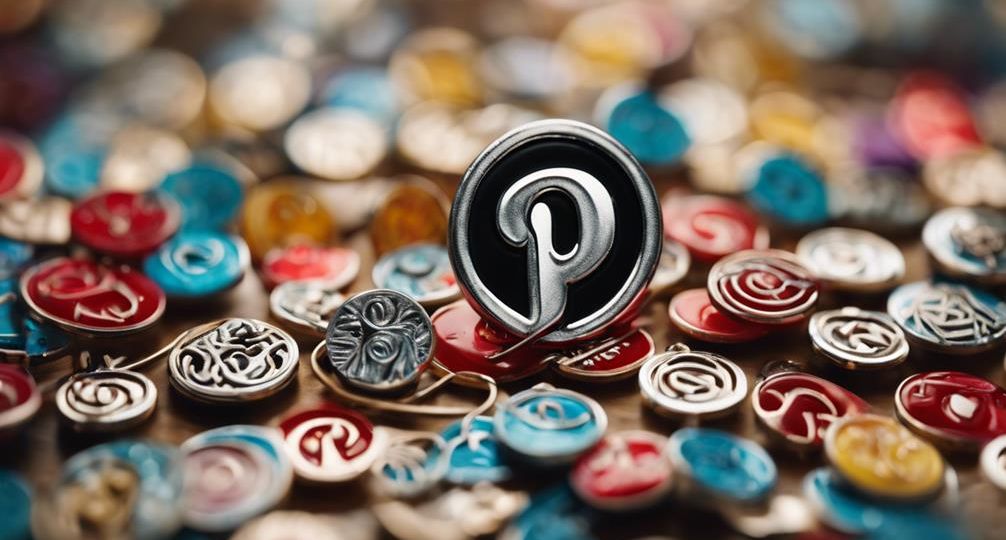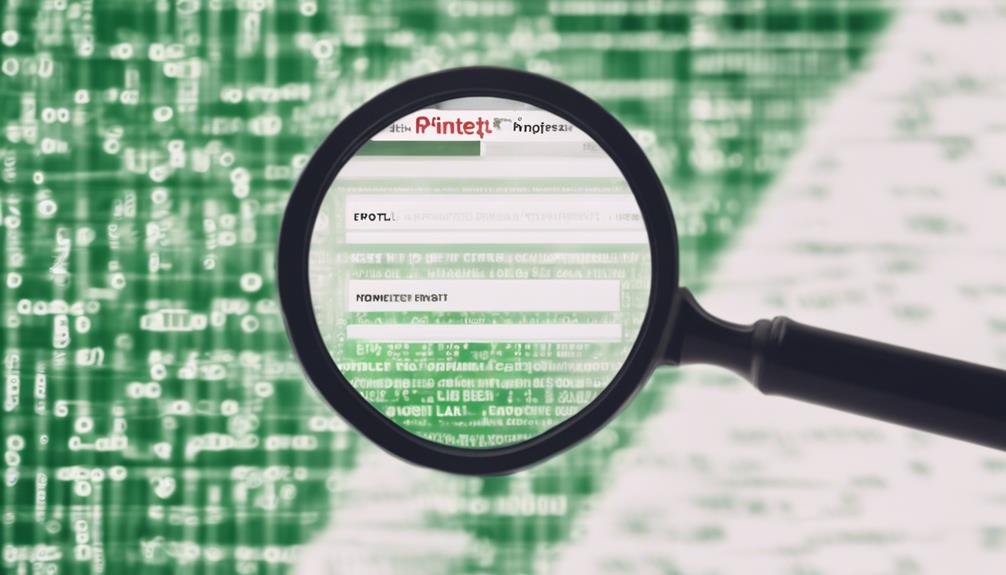
How do I enable rich pins on Pinterest?
Just as you’re busy pinning inspiring ideas on Pinterest, you stumble upon something called ‘Rich Pins’. These intriguing features offer more than your average pin, providing extra information right on the pin itself.
But how do you enable them? You’ll find it’s not as complicated as it may appear. In fact, with a few strategic steps, you can enhance your Pinterest experience and boost your online presence to a great extent.
Let’s explore this further, shall we?
Key Takeaways
- To enable Rich Pins, ensure your website is optimized with integrated metadata and high-quality images.
- Choose the right Rich Pin type for your content and apply through Pinterest.
- Validate your Rich Pins using Pinterest’s Rich Pin Validator tool and correct any errors.
- If issues persist during validation or implementation of Rich Pins, reach out to Pinterest’s support team.
Understanding the Concept of Rich Pins

To fully leverage Pinterest for your business or personal branding, it’s important to understand what Rich Pins are and how they can provide a richer experience for Pinterest users. Unlike regular pins, Rich Pins offer more context about an idea because they show extra information directly on the Pin itself. They’re designed to enhance the user’s interaction with your pins, offering a more immersive, informative experience.
You might wonder, ‘what sets Rich Pins apart?’ The answer lies in the unique Rich pins algorithms and Pin enhancement features. These algorithms work behind the scenes, effectively pulling in extra details from your website and attaching them to your pins. This means your pins aren’t just static images but dynamic entities that can provide real-time prices, availability, ingredient lists, and even location maps.
And the best part? Rich Pins update automatically. So, if you change the price on your website, the price on your Rich Pin changes too. This ensures that your audience always has access to the most accurate, up-to-date information. By understanding and utilizing these innovative features, you’ll be well on your way to optimizing your Pinterest presence.
The Importance of Rich Pins
You’re likely wondering why rich pins matter on Pinterest.
Their benefits are manifold, from providing more detailed information to enhancing user engagement.
But it’s not just about knowing the benefits, it’s also essential to understand how rich pins stack up against standard pins and how to implement them effectively to optimize your Pinterest strategy.
Benefits of Rich Pins
Often, leveraging Rich Pins can dramatically enhance your Pinterest marketing strategy by providing more context about an idea because they show extra information directly on a Pin. This added context boosts user engagement with Rich Pins and can lead to increased traffic to your site.
They’re not just about better visuals – Rich Pins offer valuable avenues for monetization, too. Imagine your product’s price, availability, and where to buy it all displayed directly on Pinterest! This real-time information can help drive sales and boost your bottom line.
Rich Pins Vs Standard Pins
Understanding the differences between Rich Pins and Standard Pins is important in recognizing their unique benefits and leveraging them effectively in your Pinterest strategy. In a pin aesthetics comparison, Rich Pins are visually more appealing, showing additional information directly on the pin. This enrichment of data can greatly enhance user engagement.
Standard Pins, on the other hand, only provide a title and description. They lack the additional context that Rich Pins offer, which can limit their impact on user engagement. For innovation seekers, Rich Pins are a game changer. They can elevate your brand, making your pins more appealing, informative, and actionable.
A user engagement analysis reveals that Rich Pins boost engagement levels, driving more traffic and interactions. Understanding this, you’ll realize the importance of Rich Pins in your strategy.
Implementing Rich Pins Effectively
To effectively leverage the power of Rich Pins in your Pinterest strategy, it’s critical to understand their implementation process and their importance in driving user engagement. Rich Pins provide more context about a pin, making them more useful, which leads to higher engagement rates.
- Choose the right Rich Pin type: Depending on your content, decide which Rich Pin type (Product, Recipe, Article, or App) suits your needs.
- Optimize your website: Use Pin optimization techniques to make your website content pinnable and enhance its visibility.
- Apply for Rich Pins: Once your website is optimized, apply to Pinterest for Rich Pins.
- Measure and Adjust: Monitor your Rich Pins strategy, measure its effectiveness, and adjust as needed for better results.
Preparing Your Website for Rich Pins
Before you can enable Rich Pins on Pinterest, it’s essential that your website is properly prepared and optimized to support this feature. This involves website optimization for pins, and creating a pin-friendly website design.
Think of your website as a storefront. Just as you would want a physical store to be inviting and easy to navigate, the same applies to your website in relation to Pinterest. Your website’s design and functionality should facilitate easy pinning.
Here’s a simple table in markdown format that outlines important steps in preparing your website for Rich Pins:
| Steps in Preparing Your Website | Description |
|---|---|
| Metadata Integration | Your website should have appropriate metadata that Pinterest can read to generate rich pins. Common metadata formats include Open Graph and Schema.org. |
| Content Optimization | Your content should be optimized for Pinterest. This includes using high-quality, vertical images, and including pinnable content like infographics or step-by-step instructions. |
| Pin-it Button | Include a ‘Pin-it’ button on your website to make it easy for visitors to pin directly from your website to their Pinterest boards. |
With your website ready, you’re one step closer to harnessing the power of Pinterest’s rich pins.
Setting Up Your Business Pinterest Account

Once your website is primed for Pinterest, you’ll need to set up a business account on the platform to start harnessing the power of Rich Pins. Here’s how to go about it:
- Head over to Pinterest and sign up for a new account using your business email.
- Confirm your email address and then complete your profile. Make sure to include a high-quality profile image, your business name, and a compelling description. This is your first step towards account optimization.
- Next, claim your website. This is essential for enabling analytics on your Pinterest account. You’ll start receiving Pinterest analytics once you’ve claimed your website, which will provide insights into your pin performance.
- Finally, set your ad preferences. Even if you’re not planning on running ads right now, it’s good to have this set up for future use.
Applying for Pinterest Rich Pins
Now that your business account is set up, let’s explore the process of applying for Pinterest Rich Pins, a feature that will greatly enhance your visibility and engagement on the platform.
First, you need to understand Rich Pins eligibility. Pinterest requires you to have an active business account and a website that you own. The website must be verified by Pinterest and you should have relevant, high-quality content that aligns with Pinterest’s standards.
Once you’ve guaranteed your eligibility, it’s time to focus on Pin optimization techniques. Rich Pins require a little more effort than regular Pins. You need to incorporate specific meta tags into your website’s HTML. These tags provide Pinterest with extra information about the content of your Pins, making them more useful and engaging for users.
There are four types of Rich Pins: App, Article, Product, and Recipe. Each type requires different meta tags. For example, an Article Pin needs tags for the title, description, and author. A Product Pin requires tags for the price, availability, and product details.
Validating Your Rich Pins

Now that you’re on your way to enabling Rich Pins, it’s crucial to validate them for maximum functionality.
We’ll walk you through understanding what Rich Pin validation means, the steps to validate your pins, and how to troubleshoot any issues that might arise.
Ensuring your pins are correctly validated not only optimizes your Pinterest presence but also enhances the experience for your audience.
Understanding Rich Pin Validation
To make sure your Rich Pins are working correctly, you’ll need to understand the process of Rich Pin validation, which involves testing the metadata on your website. This is where the importance of validation comes in, and it’s not without its complexities.
- Understanding the Basics: The validation process ensures that your pins display the correct information by checking the embedded metadata on your site.
- Dealing with Complexities: Although it sounds straightforward, the validation process complexities can be challenging. It requires a solid grasp of metadata and how it interacts with Pinterest.
- Importance of Validation: Without proper validation, your Rich Pins won’t provide the additional details that make them so valuable, reducing their effectiveness.
- Moving Forward: Once you’ve grasped the validation process, you’re one step closer to maximizing the potential of your Pinterest marketing strategy.
Steps for Pin Validation
Having understood the importance of validation, let’s walk you through the process of validating your Rich Pins.
First, ensure that your pins are optimized. Pin optimization strategies include using high-quality images, detailed descriptions, and relevant hashtags.
Next, head over to Pinterest’s Rich Pin Validator. The validation tool usage is simple: copy and paste the URL of the pin you want to validate into the box and click ‘Validate’. If your pin meets Pinterest’s standards, you’ll get a message saying ‘Your pin’s been validated!’. If not, you’ll receive error messages indicating what needs fixing.
Troubleshooting Validation Issues
Even with the best optimization strategies, you might encounter some issues while validating your Rich Pins on Pinterest. This could involve Validation Error Solutions or Unrecognized Metadata Issues. Don’t panic, though. There are four ways to address these:
- Verify your metadata: Make sure it’s correctly implemented and recognized by Pinterest.
- Test on Pinterest’s validator: This can provide immediate feedback about any potential issues.
- Consult the Pinterest Help Center: They’ve resources on common validation errors and how to resolve them.
- Contact Pinterest Support: If all else fails, they’re ready to assist.
Troubleshooting Common Rich Pins Issues

Let’s explore some common issues you might encounter with Rich Pins on Pinterest, and explore effective strategies for troubleshooting them. You may come across Rich pins errors or find that your Rich Pins are unresponsive. Don’t panic! These issues are quite common and usually easy to fix.
If you’re experiencing Rich pins errors, the first step is to check your meta tag data. Make sure it’s correctly set up and matches the information on your Pinterest account. If everything looks good but you’re still encountering errors, try clearing your browser cache or use a different browser. Sometimes, a simple refresh can do the trick.
Unresponsive Rich Pins, on the other hand, could be due to several reasons. It could be a temporary issue with Pinterest itself or it could be because the link to your website is broken. Double-check your links and make sure that your website is up and running. You can also try re-validating your Rich Pins. If all else fails, don’t hesitate to reach out to Pinterest’s support team.

